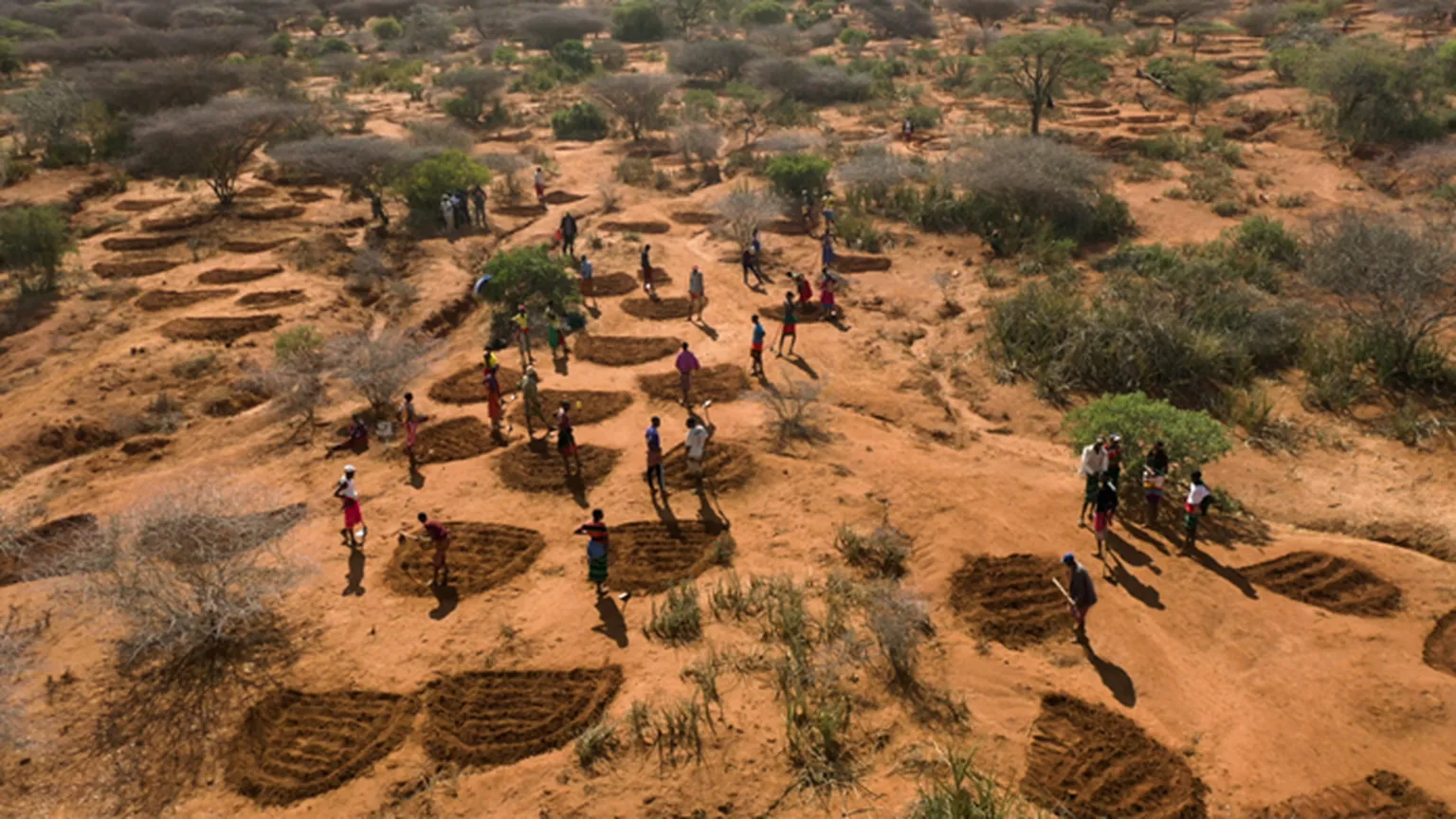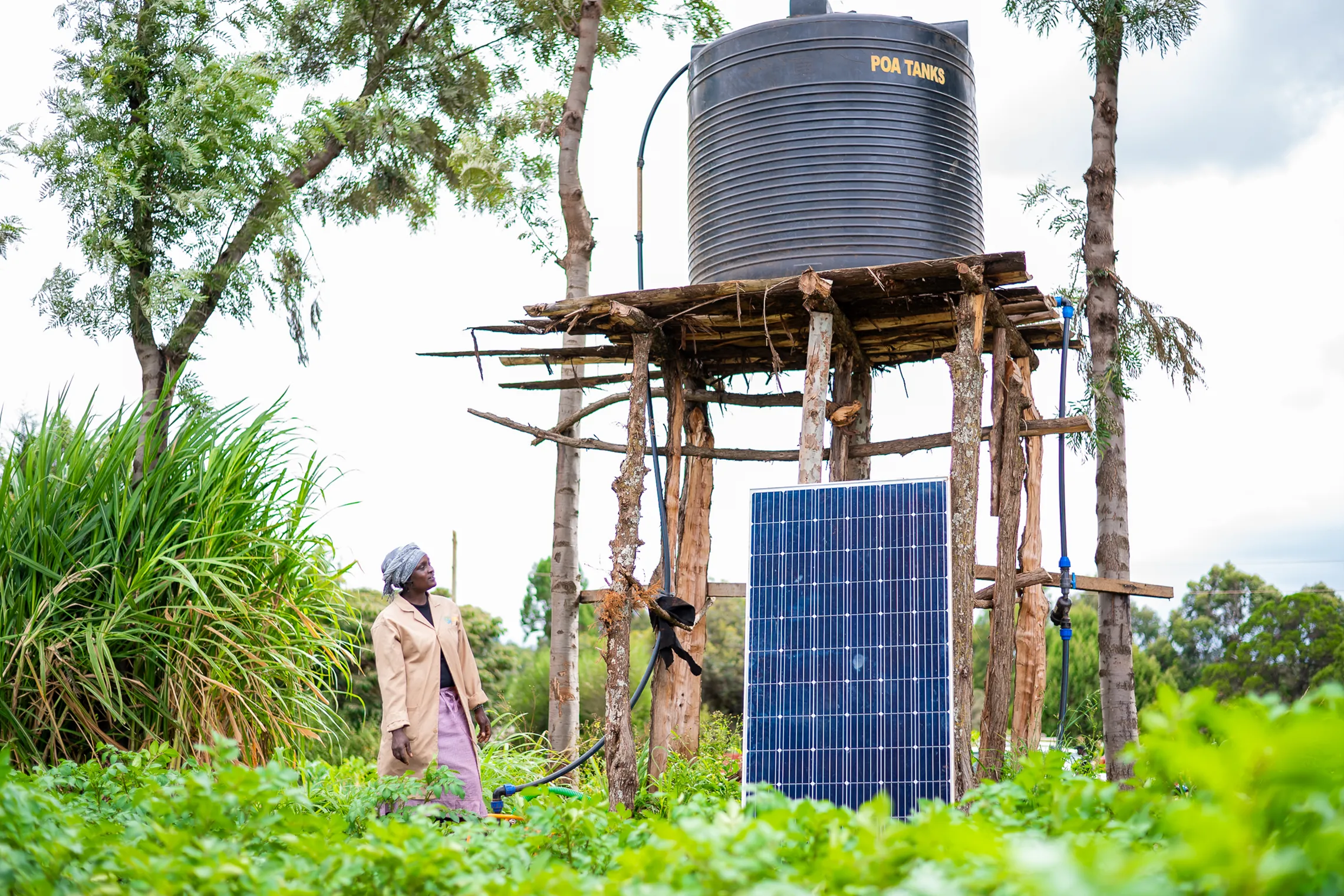Perspective: Exploring the agri-food, energy and water sector nexus

Dr David Ojwang is a horticultural crop physiologist currently the SNV sector leader for agri-food systems in Kenya and Burundi.
Climate change has direct and indirect negative effects on global food security and production, impacting the availability, accessibility, and quality of food. These changes also jeopardise livelihoods by affecting health, causing displacement, and raising concerns about peace and security. Women, children, and vulnerable communities are particularly affected by these consequences.
Impact of climate change on agri-food systems
Forecasts of climate change for East Africa, and Kenya specifically, indicate rising temperatures, less precipitation, seasonal variations, and an increase in climate shocks, which have the potential to negatively impact the agri-food sector. The sector is becoming more vulnerable to climate change, with negative implications on the profitability and sustainability of production systems.
There is a need, therefore, to address resource security and the inherent just distribution among communities sharing resources.
With the population in Africa projected to reach 2.5 billion by 2050 - a 950 million increase from 2024 - and increasing cases of food insecurity, the current food production must rise by 70 percent by 2050. This will involve investing in building resilience to climate change for the continent to feed the expanding food demand. Increasing food production will entail putting more pressure on natural resources such as water, energy, and environmental services like forests. Competition for these resources will potentially lead to natural resource-based conflicts.
To achieve transformative change within the agri-food sector, solutions addressing climate change cannot be applied in silos. There is a need to integrate these solutions in a holistic approach. We need to build synergies between these resources, while managing them sustainably, for now and the future.
Governments, development partners and donors have in the recent past, put more focus on the interactions in managing water, energy and food, the so-called water-energy food (WEF) nexus, and the need for an integrated approach to support sustainable development. They have realised that single-sector, top-down and compartmentalised approaches are insufficient in tackling the challenges in the face of changing climate. This nexus-based approach is widely recognised as enabling improved use of limited natural resources to support sustainable development.

Harnessing solar energy for water access in agri-food system
The nexus approach across different sectors
The humanitarian-development-peacebuilding nexus integrates emergency relief with long-term development and peace efforts. Organisations such as World Vision emphasise the need for agility in shifting from immediate humanitarian response to addressing root causes, fostering resilience in fragile contexts. Oxfam’s Triple Nexus approach combines humanitarian aid, development, and peacebuilding to tackle systemic inequalities and risks. Similarly, the World Food Programme (WFP) applies the HDP nexus, ensuring crisis responses transition into prevention, resilience-building, and system strengthening.
In the health sector, MOMENTUM Integrated Health Resilience incorporates the humanitarian-development nexus into maternal, newborn, and child health programmes in fragile contexts. By enhancing resilience at individual, household, community, and system levels, they ensure interventions are feasible, measurable, and responsive to ongoing challenges.
The trade-climate nexus highlights the dual role of trade in both contributing to and mitigating climate change. The World Bank argues that trade influences emissions but also plays a key role in adaptation and mitigation strategies. Addressing trade and climate challenges requires integrated solutions, particularly in sectors such as agriculture and tourism, where climate change affects comparative advantages.
The climate-biodiversity-poverty nexus, championed by the Global Centre on Biodiversity for Climate (GCBC), recognises the interconnections between these issues. Biodiversity loss exacerbates climate risks and poverty, but nature-based solutions - such as ecosystem protection - can offer sustainable income sources while safeguarding communities from climate extremes.
This multi-sectoral nexus approach highlights the need for holistic, integrated solutions to complex global challenges.
Nexus approach at SNV
SNV’s mission of strengthening capacities and catalysing partnerships that transform the agri-food, energy, and water systems, enabling sustainable and more equitable lives for all, serves as a key opportunity for our work on the Nexus. The nexus approach at SNV highlights the interdependence of water, energy and food (WEF) security that identifies mutually beneficial responses, based on understanding the synergies. This approach helps us to better understand the complex and dynamic interrelationships, so that we can use and manage our limited resources sustainably. Further, it forces us to think of the impacts, a decision in one sector can have on others.
Actions or shifts in one sector affect others: food production requires water and energy; clean water supply and distribution need energy and land-based ecosystems; and energy production depends on water and land. Choices about food production impact energy and water use, while decisions on water and energy supplies influence land use. In anticipating potential trade-offs and synergies, we can then design, appraise and prioritise response options that are viable across different sectors.
Novel approaches for the sustainable use of WEF resources
SNV aims to deploy novel approaches to support national and local governments towards the efficient and sustainable use of WEF resources. Some of the approaches include (1) Customisation of WEF nexus assessment tools to suit local conditions; (2) Co-creation of WEF nexus solutions with local communities through Living Labs; (3) Establishment of WEF nexus Communities of Practice for robust and sustained stakeholder engagement; and (4) The creation of real-time data as well as indigenous knowledge systems. In the past 10 years, SNV has helped communities adapt to the impacts of climate change by introducing responsive climate technologies in the context of nexus for a resilient and productive landscape.
A key example is the LISTEN project, which demonstrates how an integrated nexus approach can transform livelihoods in fragile ecosystems. In Laikipia, Isiolo, and Samburu, SNV has applied water-energy-agrifood solutions to enhance food security while supporting agri-based enterprises among pastoralist communities. By introducing solar-powered irrigation systems and rehabilitating boreholes, farmers now have access to water for year-round farming, reducing vulnerability to climate shocks.
Another example is SNV’s work in climate-resilient dairy farming in Zambia, where the Pro-Dairy project is helping smallholder farmers integrate sustainable energy solutions into dairy production. By using biogas-powered heating systems and solar-powered irrigation for pasture production, farmers are improving productivity while reducing reliance on fossil fuels. This nexus-driven approach not only enhances food security but also supports regenerative agriculture and climate resilience.
Beyond project-level innovations, SNV champions evidence-based research to scale up climate-resilient nexus solutions. By fostering structured stakeholder engagement and public-private partnerships, SNV is working to create an enabling policy environment for long-term climate investments.
By bridging technology, policy, and community action, SNV continues to demonstrate that a nexus-driven approach can build resilience, enhance food security, and drive sustainable economic growth.

Using slamdam to protect the local pastoralists from flooding
Challenges with implementing nexus approaches
Addressing climate change challenges needs a holistic and participatory approach in changing the social behaviour of the participants through Behaviour Change Communication strategies. However, we have observed that climate change presents its own set of significant challenges, as discussed below:
(1) In 2024, the communities around the northern frontiers of Kenya faced increased incidences of flooding, droughts and outbreak of pests such as locusts and army worms. Building resilience to these challenges requires interdepartmental collaborations, to put in place early warning systems, as part of the community preparedness.
(2) The fragile contexts in which nexus is being applied, are characterised by natural resource (water, fodder) based conflicts, creating a non-conducive environment for sensitisation, exposure to technologies and adoption of these technologies. Investing in peacebuilding as part of the wider nexus approach will be relevant and important.
(3) The pastoralist communities within these landscapes share resources, such as grazing land, under a unique and complex tenure system, presenting great potential for persistent violent conflicts in the absence of functional resource governance institutions.
(4) Social and cultural norms within the community that promote cattle rustling as a rite of passage among adolescent boys create insecurity. The promotion of non-traditional value chains such as poultry farming, which is often viewed alongside birds and vegetables as livestock forage, is affecting scaling up and gender inclusion.
(5) Policy challenges around investment in water, energy and market access, are a disincentive to the adoption of technologies, which requires advocacy and policy influencing in a multi-stakeholder platform.
Conclusions and recommendations
The agri-food sector heavily depends on water and energy resources for production, processing, storage and food preparation. Management of water, energy and food resources, therefore, requires a comprehensive integrated approach, leaving no one behind in the process.
Sustainable agricultural production practices are becoming more critical, demanding an increased efficiency along the entirety of agri-food systems to save water and energy. The adoption of efficient climate-smart water initiatives will enhance these efficiencies. There is a need to promote a green economy by establishing green infrastructure such as slamdams and investment in solar-powered irrigation pumps and rainwater harvesting at farm level. Such infrastructural investment will require the participation of water-food-energy stakeholders for dialogue, learning and exchange of best practices.
There is need for a better understanding of the interactive nature of water, energy and agri-food in their temporal and spatial scale for enhanced resource security and facilitating the inter-sectoral and holistic approaches in decision-making will eventually lead to sustainability. This requires investing in research and development as part of the validation of novel practices.
Sharing these practices through forums will facilitate learning and knowledge dissemination to scale. The time for acting to improve integrated water-energy-food nexus planning for poverty eradication and climate resilience is now. We need to change our attitudes, while talking to the government and development partners, creating a conducive environment to accelerate adoption.